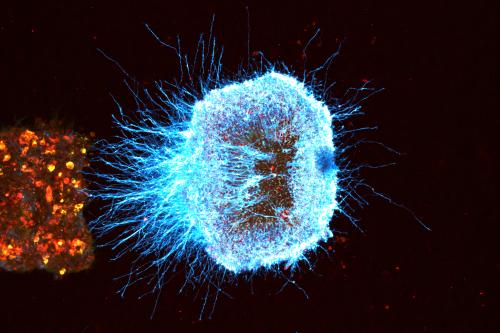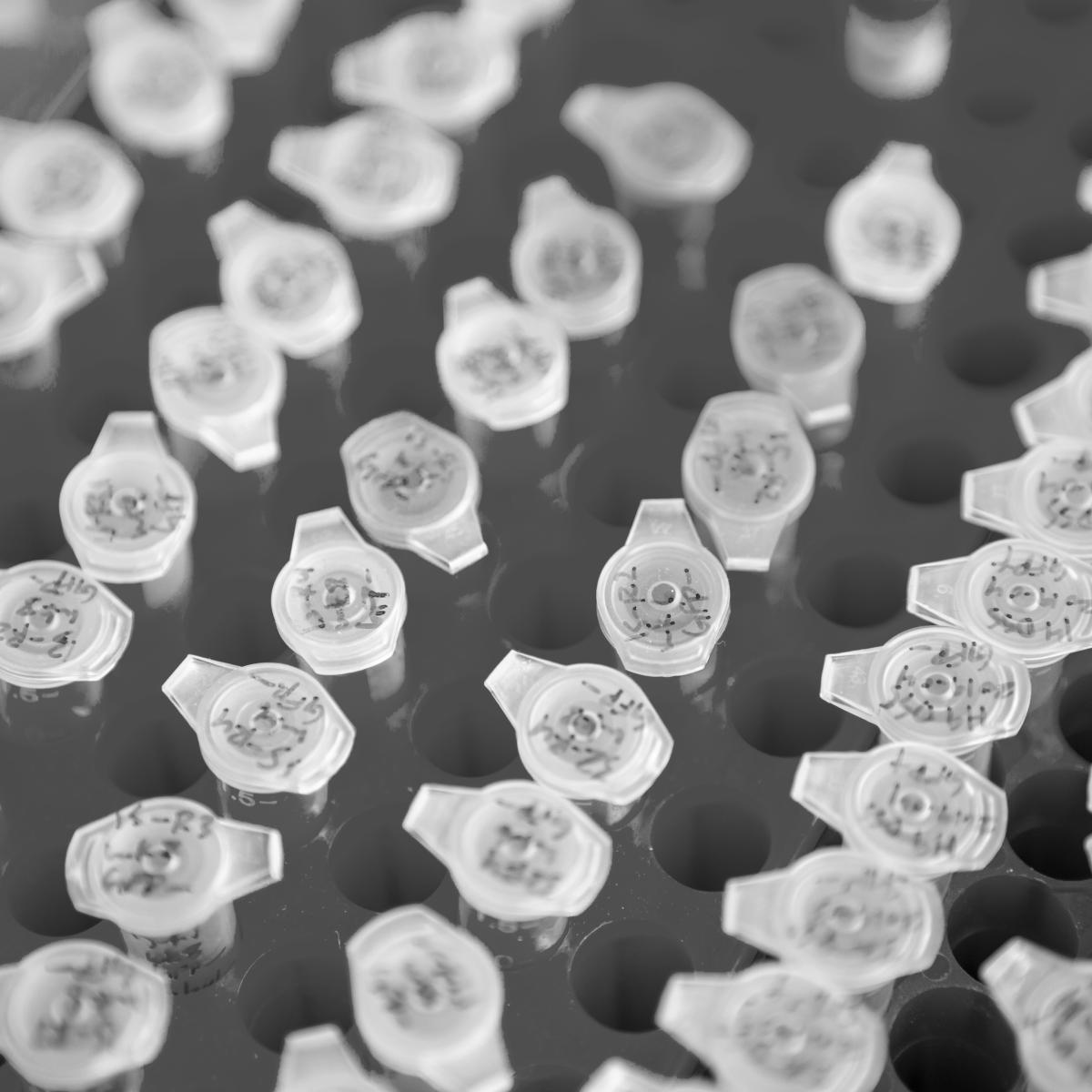

A field focused on developing and applying new therapies and techniques to repair, replace or regenerate tissues and organs and restore function that has been lost due to aging, disease, injury or genetic defects.
In stem cell research, scientists can reprogram cells that have undergone differentiation The process by which stem cells transform into specific, specialized cell types with distinct functions and features. differentiation The process by which stem cells transform into specific, specialized cell types with distinct functions and features., such as skin or blood cells, to revert back into an embryonic-like state. The resulting cells are called induced pluripotent stem cells iPS cells are cells taken from a patient that are reprogrammed so that they can undergo differentiation into any type of cell in the body. By maintaining the genetic code of the patient, iPS cells play a crucial role in disease modeling and regenerative medicine. induced pluripotent stem cells iPS cells are cells taken from a patient that are reprogrammed so that they can undergo differentiation into any type of cell in the body. By maintaining the genetic code of the patient, iPS cells play a crucial role in disease modeling and regenerative medicine..
Short for RiboNucleic Acid, this molecule carries genetic messages from DNA Short for deoxyribonucleic acid, DNA is a double-stranded molecule that serves as the genetic blueprint for living organisms. Composed of four chemical bases, DNA encodes the instructions necessary for protein synthesis and governs the development, function, and inheritance of traits in an organism. DNA Short for deoxyribonucleic acid, DNA is a double-stranded molecule that serves as the genetic blueprint for living organisms. Composed of four chemical bases, DNA encodes the instructions necessary for protein synthesis and governs the development, function, and inheritance of traits in an organism. and is found inside living cells. These messages tell cells to make the proteins that play many critical roles in the body.
A process by which a newly-made precursor messenger RNA Short for RiboNucleic Acid, this molecule carries genetic messages from DNA and is found inside living cells. These messages tell cells to make the proteins that play many critical roles in the body. RNA Short for RiboNucleic Acid, this molecule carries genetic messages from DNA and is found inside living cells. These messages tell cells to make the proteins that play many critical roles in the body. (pre-mRNA) transcript is transformed into a mature messenger RNA (mRNA). By removing all the introns (non-coding regions of RNA) and splicing back together exons (coding regions), this process ensures that the final mRNA Short for messenger ribonucleic acid, this single-stranded molecular plays a crucial role in protein synthesis within cells. Specifically, it carries the genetic information encoded in DNA to the ribosomes, where it is "read" to assemble proteins based on the code. mRNA Short for messenger ribonucleic acid, this single-stranded molecular plays a crucial role in protein synthesis within cells. Specifically, it carries the genetic information encoded in DNA to the ribosomes, where it is "read" to assemble proteins based on the code. molecule can be used by the cellular machinery to translate the DNA Short for deoxyribonucleic acid, DNA is a double-stranded molecule that serves as the genetic blueprint for living organisms. Composed of four chemical bases, DNA encodes the instructions necessary for protein synthesis and governs the development, function, and inheritance of traits in an organism. DNA Short for deoxyribonucleic acid, DNA is a double-stranded molecule that serves as the genetic blueprint for living organisms. Composed of four chemical bases, DNA encodes the instructions necessary for protein synthesis and governs the development, function, and inheritance of traits in an organism. code into protein.
